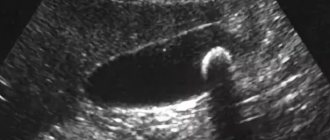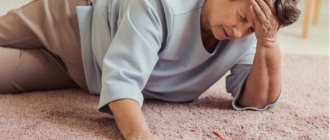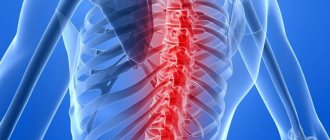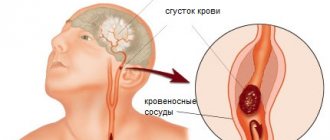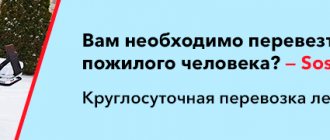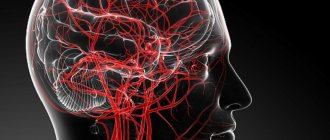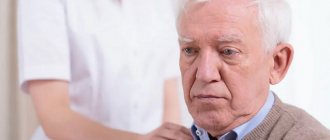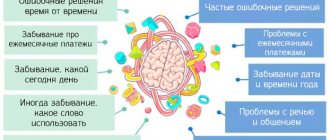Types of stroke
Clinicians distinguish two types of stroke: hemorrhagic and ischemic. The ischemic type accounts for more than 80% of all cases of the disease. It occurs due to narrowing or blockage of blood arteries, which impedes the flow of oxygen to the brain. Typically, this type of stroke occurs after age 60.
Hemorrhagic occurs when blood vessels rupture as a result of high blood pressure and bleeding in the brain. In this case, the prognosis for recovery is unfavorable and the survival rate is quite low.
It is also worth highlighting transient ischemic attack (ministroke). An acute transient circulatory disorder lasts from 5 to 10 minutes, but if this is not given due importance, the consequences can be quite serious.
Bibliography
- Hemorrhagic stroke in adults: clinical recommendations of the Ministry of Health of the Russian Federation, 2021. Developers: Association of Neurosurgeons of Russia. - Electronic text. - URB: (access date 08/18/2020).
- Efremova M.D. Stroke as an urgent socio-psychological problem / M.D. Efremova – electronic text//Skif. Questions of student science.- 2021 - No. 2(24) URB: (date of access 08/17/2021) Access mode: Cyberleninka electronic library system. — Text: electronic.
- Ischemic stroke and transient ischemic attack in adults: clinical recommendations of the Ministry of Health of the Russian Federation, 2021 developers: All-Russian Society of Neurologists, National Association against Stroke, Association of Neurosurgeons of Russia, Association of Neuroanesthesiologists and Neuroreanimatologists, Union of Rehabilitologists of Russia. - Electronic text. - URB: ( access date 08/18/2020).
- Machinsky P.A. Comparative characteristics of incidence rates of ischemic and hemorrhagic stroke in Russia / P.A. Machinsky, N.A. Plotnikova, V.E. Ulyankin [and others] – Direct text.// News of higher educational institutions. Volga region. Medical Sciences.- 2021.- “2(50)-P.112 – 132 DOI 10.21685/2072-3032-2019-2-11.
- Monitoring the implementation of the federal project “Combating Cardiovascular Diseases” - Presentation Department of Organization of Medical Care and Sanatorium Affairs of the Ministry of Health of the Russian Federation URB: (date of access 08/17/2021).
- Order of the Ministry of Health of the Russian Federation dated November 15, 2012 N 928n “On approval of the Procedure for providing medical care to patients with acute cerebrovascular accidents.” — URB: (access date 08/17/2021) Access mode: Electronic library system “Garant”. — Text: electronic.
- Order of the Ministry of Health of the Russian Federation dated July 31, 2021 No. 788n “On approval of the Procedure for organizing medical rehabilitation of adults.” – URB: (date of access 08.17.2021).- Access mode: Electronic library system “Garant”. — Text: electronic.
- Prevention of cerebrovascular accidents: textbook. manual / Compiled by: L.B. Novikova, A.P. Akopyan. – Ufa: Publishing house of the State Budgetary Educational Institution of Higher Professional Education BSMU of the Ministry of Health of Russia, 2015.-58 p.
- Stakhovskaya L.V. Analysis of epidemiological indicators of recurrent strokes in the regions of the Russian Federation (based on the results of the territorial-population register 2009-2014) / L.V. Stakhovskaya, O.A. Klochikhina, M.D., Bogatyreva, etc.]. CONSILIUM MEDICUM, 2021, vol. 5, no. 9, p. 8-11.
- Shamalov N. A. Analysis of the dynamics of the main types of stroke and pathogenetic variants of ischemic stroke / N. A Shamalov, L. V Stakhovskaya, O. A Klochikhina [and others]. Direct text. // Journal of Neurology and Psychiatry named after. S.S. Korsakov. Special issues. 2019;119(3-2):5-10. doi.org/10.17116/jnevro20191190325.
- 1RRE Electronic edition. Updated daily Stroke Day is celebrated on October 29, 2021 URB: (accessed 08/17/2021).
Author:
Pugonina Tatyana Alekseevna, Therapist
Signs of a stroke
Most often, cerebrovascular accident occurs suddenly. Symptoms include:
- Increased blood pressure.
- Strong headache.
- Dizziness.
- Loss of balance.
- Noise in ears.
- Visual impairment (loss of fields).
- Numbness of the facial muscles and limbs.
- Articulation impairment.
In addition, older women may have atypical symptoms: hiccups, fever, attacks of fear.
A stroke can develop from several hours to days. You can understand that changes in blood circulation are occurring by the occurrence of tachycardia (rapid heartbeat), attacks of fear, decreased attention, and loss of orientation.
The appearance of such symptoms is a reason to seek emergency medical help. Taking timely measures will help stop cell death and avoid serious complications.
Symptoms of different types of stroke
But there are differences between types of stroke, and significant ones at that.
| Sign | Heart attack | Hemorrhage | Subarachnoid hemorrhage |
| How it comes | Slowly | Fast - in minutes or hours | Sharply - in 1-2 minutes |
| Headache | Weakly expressed | Strongly expressed | Strongly expressed |
| Consciousness | Brief loss | Lasting loss | Brief loss |
| Vomit | Occasionally | Often | Often |
| Nuchal muscle tone | Absent | Often | Constantly |
| Weakness | Often | Often | Occasionally |
| Speech Impairment | Often | Often | Occasionally |
| Retinal hemorrhage | No | Occasionally | Occasionally |
With ischemic stroke, the signs are not so pronounced and obvious. First there is a headache, which is accompanied by:
- a feeling of heaviness in the back of the head;
- memory lapses;
- other mental disorders;
- paralysis.
If at least some symptoms appear, you should seek medical help as soon as possible.
Stroke in older women
According to statistical studies, stroke occurs in 1.5-2% of the population every year, while timely medical care is provided only in 50% of cases. It is for this reason that this pathology often causes disability and death.
As a rule, women are susceptible to stroke after 60 years of age, while in men this risk occurs much earlier - after 40 years of age. This is largely due to hormonal disorders that occur in the body of women during menopause. Smoking, alcohol, long-term use of hormonal drugs, and blood clotting disorders also contribute to the development of stroke in women.
Women suffer the pathology more severely than men and only a small percentage of patients return to a normal lifestyle. The reason for this is untimely provision of medical care.
Causes
All the reasons why strokes develop in younger people are also present in older people. But older people are more susceptible to illness due to atherosclerosis, cardiovascular problems and chronic ailments.
Let's look at the main causes of stroke and risk factors for stroke in the elderly:
• Arterial hypertension or persistent high blood pressure. The cause occurs in 70% of older people. After 80 years, it often leads to ischemic and hemorrhagic strokes. • Heart failure and previous myocardial infarction. • Increased blood cholesterol levels. Metabolism deteriorates, because of this cholesterol is processed worse and remains on the vascular walls. Blood flow is disrupted, causing blood clots to form. • Atrial fibrillation. The rhythm of heart contractions is disrupted, causing uneven blood flow to develop. Because of this, blood clots form and spread throughout the body. Once in the brain, such a blood clot can cause a stroke. • Excess weight and impaired metabolism. They increase the load on the heart and provoke illness. These reasons are associated with a sedentary lifestyle and lack of physical activity. Because of them, blood circulation slows down and excess weight is gained. • Diabetes mellitus also causes stroke. • Bad habits: alcohol abuse and tobacco addiction. They harm the heart and blood vessels. • Self-administration of medications that affect heart function and blood circulation. • Stress, nervous tension, excessive mental stress. This is especially dangerous for those who have had a stroke before.
The cause may be atherosclerotic or cholesterol plaque, vascular spasm due to hypertension, rupture of thin capillaries due to large blood clots entering them, cessation of blood circulation in the brain due to a sharp decrease in blood pressure.
If a person has two or more factors from this list, the risk of developing a stroke with severe consequences is increased.
How to recognize a stroke
You can determine the development of a stroke by doing the following:
- Try to quickly repeat the phrase.
- Smile widely (if a stroke develops, the immobility of part of the face will be noticeable).
- Raise your arms up (if cerebral circulation is impaired, this will not be possible).
- Ask the person to show their tongue (in the case of a stroke, its tip will be deviated towards the brain lesion).
If the patient cannot pass this test, you must immediately call an ambulance, and during this time provide first aid:
- Lay the patient down, raising his head above body level.
- Provide air flow (open a window, balcony).
- Free yourself from tight clothing (unfasten your bra, belt, belt, tie, etc.).
- When vomiting, turn your head to the side.
- Measure blood pressure, pulse, record all readings.
When signs of a stroke appear, it is important to behave calmly and reassure the person, since excessive emotionality contributes to increased blood pressure.
Diagnostics
How to diagnose a stroke at home
Every person needs to know the signs of a stroke. Being able to recognize a dangerous condition in a loved one in time means saving his life and preserving his health. Remember that anyone can have a stroke.
A stroke affects the nerves of the head and nearby limbs, causing muscles to lose healthy functionality.
Hemorrhagic stroke manifests itself sharply and clearly. You can recognize a dangerous condition by doing a few simple tests:
1. Ask to smile. Normally, both sides of the face are symmetrical, and smiling is effortless. A sick person will not be able to smile straightly; one side of the face will sag and be “late.” 2. Ask to raise both hands and hold them in front of you for a few seconds. A healthy person will be able to raise both arms at the same time, and they will be at the same level. With a stroke, one arm will lag behind the other, or it will not be possible to raise it at all. 3. Ask to repeat a simple phrase. A healthy person will be able to do this, speech will be clear and understandable. The patient's speech is slurred, incomprehensible, and it is difficult to pronounce words. 4. Ask to stick out your tongue - it will tilt to the side. 5. Ask to bare your teeth. You can bare your teeth with only one half of your mouth. 6. Ask to frown. One eyebrow will be furrowed more than the other.
If a person fails these tests, he may be suspected of having a stroke. Call an ambulance immediately.
Ischemic stroke can be detected at home by hypertensive crises and ischemic attacks. This results in a lack of blood supply to the brain. For diagnosis, you can use L. S. Manvelov’s questionnaire. Each “yes” answer receives a point if the symptom has been observed at least once a week over the past 3 months:
1. Headache due to overwork and changes in weather. It is not associated with hypertension, the nature of the pain is non-localized; 2. Tinnitus – regular or periodic; 3. Short loss of consciousness and dizziness when moving (getting out of bed/chair, bending over); 4. Short-term memory loss; 5. Lethargy, insomnia, decreased performance.
If a person answered yes to two or more points, it can be assumed that a stroke will develop in the near future. You need to go to an appointment with a therapist and get a referral to a neurologist from him.
Diagnostics in the hospital
To determine the type of stroke, different techniques are used: magnetic resonance imaging, computed tomography, electroencephalography, head X-ray, cerebrospinal fluid examination and blood tests.
The data obtained helps determine the type of stroke, the location of the pathology, and discover connections with parts of the brain. The sooner the patient is taken to the hospital, the more accurate his examination will be and the more effective the assistance. In the first 6 hours after an attack, medical care is most effective. This is especially important in acute strokes, which can severely damage the brain within 3-5 days.
Prognosis and possible complications
Stroke in old age often has severe complications and consequences. The most favorable prognosis is partial restoration of functions affected by damage to parts of the brain.
Most often, older people who have suffered from this disease have problems with disorientation, speech and coordination of movements. However, this is only possible if medical care was provided in a timely manner.
If medical assistance is not provided within 2-3 hours after the onset of the first symptoms, then the person is susceptible to complications such as:
- Paralysis, paresis.
- Serious speech defects (up to its complete absence).
- Strabismus and other vision pathologies.
- Urinary and fecal incontinence.
- Dysphagia (impaired swallowing).
- Cardiac ischemia.
- Poor circulation of the inner ear, often hearing loss.
- Parkinson's disease.
In most cases, people who have had a stroke are unable to lead a normal life and require constant care.
Symptoms
Brain cells that have lost normal blood supply due to a stroke die. Usually this immediately manifests itself in a person’s condition.
The main signs of a stroke are as follows:
• Dizziness and severe headache; • Loss of consciousness, fainting; • Impaired coordination of movements, disorientation in space; • Problems with speech and pronunciation: poor diction, the patient cannot pronounce sounds, speaks slowly; • Absent-mindedness; • Deterioration of vision: darkening of the eyes, blurred vision.
A stroke in an elderly person can happen at any time of the day, but most often occurs in the early morning or evening. The condition may worsen over several days as bleeding in the brain occurs slowly. Symptoms may wax and wane over several days.
There are certain initial signs that indicate an approaching attack. Older people often don't give them the attention they deserve, but they shouldn't be ignored or overlooked. If you find them, be sure to consult a doctor.
Stroke manifests itself differently depending on the type and location.
Hemorrhagic stroke manifests itself clearly:
• Acute and sharp pain; • Foggy consciousness, lethargy, fainting; • Cramps throughout the body; • Nausea and vomiting; • Feeling as if someone had hit the head; • Pupil dilation – on the side of the head where the stroke occurred.
Ischemic stroke manifests itself more easily and develops gradually. A person has a headache and also experiences these symptoms:
• Memory problems; • Numbness of the muscles at the back of the head; • Incorrect speech; • Paralysis, paresis; • Dementia and other mental disorders.
An ischemic stroke may go away on its own over time. Symptoms increase, then gradually weaken, and the person’s health returns to normal.
Rehabilitation
Elderly people who have suffered a stroke must undergo a long course of rehabilitation. This period is very important, since rehabilitation will help minimize the consequences of circulatory disorders and significantly improve your overall condition.
The list of actions to restore the patient includes both physical and psychological assistance. A person must feel important and supported; only in this case will he be able to overcome the psychological discomfort associated with the partial loss of cognitive functions.
Even if the patient’s motor function is normal, it is necessary to purchase an orthopedic mattress. When a disruption in activity does occur and a person has limited physical capabilities, it is necessary to regularly change his position (to avoid bedsores).
Often, a person who has suffered a stroke is prescribed medications to normalize blood circulation. They must be taken strictly according to the regimen prescribed by the attending physician. If signs of apathy or aggression appear, the help of a psychologist, and in some cases a psychiatrist, is necessary.
The benefits of a boarding house for an elderly patient
Caring for an older person who has had a stroke can be difficult. In order to correctly and effectively help a patient recover, you need to have the necessary knowledge and undergo training. Not every loved one has enough strength, knowledge and time to provide quality assistance to their relative.
Caring for the patient requires monitoring medications, maintaining sleep and eating habits, maintaining regular hygiene, performing physical and cognitive rehabilitation exercises, and observing the prevention of bedsores.
At home, it is difficult to provide full-fledged, high-quality rehabilitation after a stroke. A good option is to go to a boarding house for the elderly, where the person will be surrounded by professional care, and help the relative together with specialists. He needs the support and participation of his loved ones - this is very important for a quick and successful recovery.
Prevention
The following preventive measures will help prevent a stroke:
- Annual medical examination (cholesterol control, blood glucose levels).
- Regular blood pressure monitoring.
- Quitting alcohol and smoking.
- Sleep at least 7 hours.
- Daily walking.
- Proper nutrition (the diet should include a lot of protein, vegetables, fruits).
- Active lifestyle (exercise, yoga, swimming).
Stroke is a disease that leads to disability. To avoid it, you need to be careful about your health and lead a healthy lifestyle.
Patterns of development of the pre-stroke state
Primary signs of a pre-stroke condition in elderly women may be nonspecific. May appear:
- frequent headaches;
- nausea;
- malfunction of the sense organs.
Similar symptoms can appear with the progression of many diseases, including hypertensive crisis, a drop in sugar levels, and others.
However, despite the nonspecificity of the symptoms, it is still possible to recognize a pre-stroke condition. There are several factors that allow you to determine pathology at an early stage:
- The pre-stroke state was preceded by a long period. It is clear that transient ischemia cannot develop suddenly over a few days or hours. There is always an initial stage from which signs are taken into account. This stage usually takes 14-21 days, but in some patients it can last longer.
- The general condition worsens. In women, pre-stroke is much more severe than in men and often ends in necrosis.
- The manifestations are more pronounced. This factor is directly related to the previous one.
- The likelihood of an emergency occurring is much higher. Most often it is characterized by tissue death.
Content
What is a stroke?
Complications after a stroke
- Paralysis
- Coma
- Brain swelling
- Aphasia
- Loss of coordination
- Apraxia of walking
- Relapse of the disease - why does it happen?
Who can have a stroke? Predisposing factors
- The main distinguishing features of female attacks
- In men
Precursors of stroke
The main thing is to see a doctor in time
Drugs for stroke

